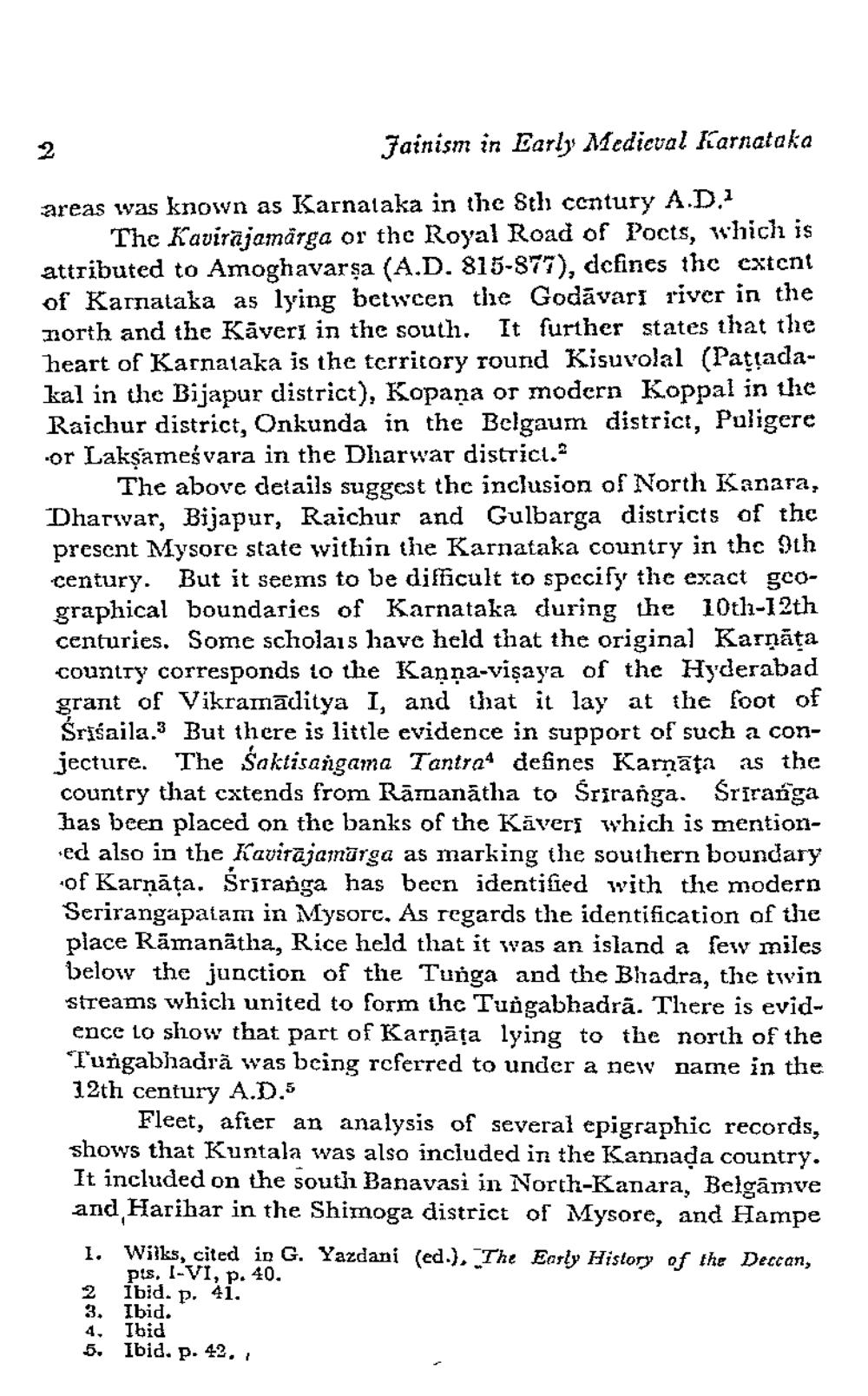________________
Jainism in Early Mcdicval Fiarnataka
areas was known as Karnataka in the Sth century A.D.1
The Kavirajamärga or the Royal Road of Poets, which is attributed to Amoghavarşa (A.D. 815-877), defines thc extent of Karnataka as lying between the Godavari river in the north and the Käveri in the south. It further states that the heart of Karnataka is the territory round Kisuvolal (Patçadakal in the Bijapur district), Kopana or modern Koppal in the Raichur district, Onkunda in the Belgaum district, Puligere or Laksameśvara in the Dharwar districi."
The above details suggest the inclusion of North Kanara, Dharwar, Bijapur, Raichur and Gulbarga districts of the present Mysore state within the Karnataka country in the Oth century. But it seems to be difficult to specify the exact geographical boundaries of Karnataka during the 10th-12th centuries. Some scholars have held that the original Karnāta country corresponds to the Kanna-vişaya of the Hyderabad grant of Vikramaditya I, and that it lay at the foot of Śrisaila.3 But there is little evidence in support of such a conjecture. The Saktisargama Tantra defines Karnāța as the country that cxtends from Rāmanātha to Sriranga. Sriranga has been placed on the banks of the Kāvers which is mentioned also in the Kavirajamurga as marking the southern boundary of Karnāta. Sriranga has been identified with the modern Serirangapatam in Mysore. As regards the identification of tlic place Ramanatha, Rice held that it was an island a few miles below the junction of the Tunga and the Bhadra, the twin streams which united to form the Tungabhadrã. There is evidence to show that part of Karnāța lying to the north of the Turgabhadrâ was being referred to under a new name in the 12th century AD,5
Fleet, after an analysis of several epigraphic records, shows that Kuntala was also included in the Kannada country. It included on the south Banavasi in North-Kanara, Belgāmve and Harihar in the Shimoga district of Mysore, and Hampe 1. Wilks, cited in G. Yazdani (ed.), The Early History of the Deccan,
pis, I-VI, p. 40. 2 Îbid. p. 41. 3. Ibid. 4. Ibid 5. Ibid. p. 42, ,




